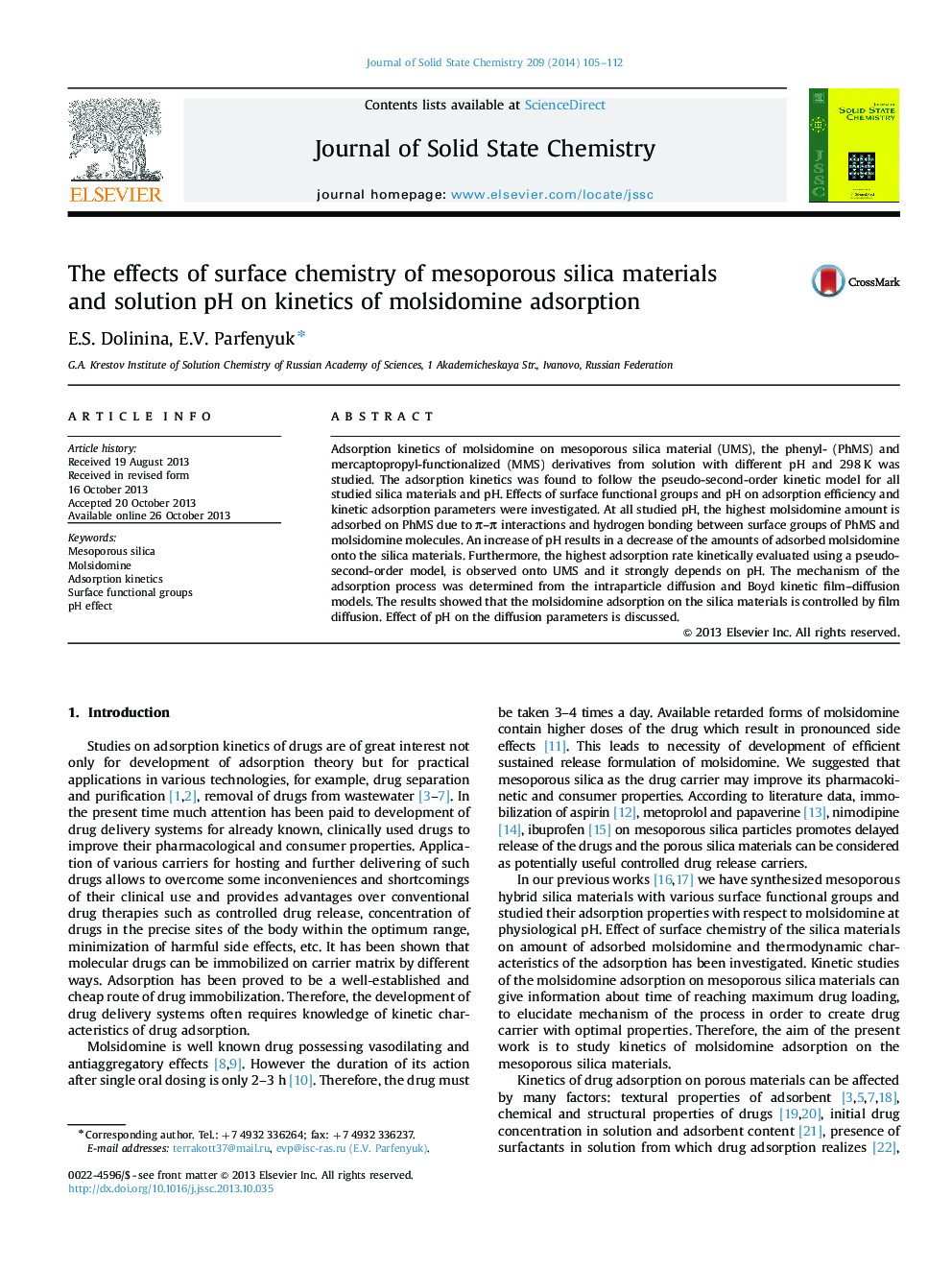| کد مقاله | کد نشریه | سال انتشار | مقاله انگلیسی | نسخه تمام متن |
|---|---|---|---|---|
| 1331992 | 1500107 | 2014 | 8 صفحه PDF | دانلود رایگان |

• The adsorption capacities of UMS, PhMS and MMS were dependent on the pH.
• At all studied pH, the highest molsidomine amount is adsorbed on PhMS.
• The highest adsorption rate, k2, is observed onto UMS and strongly depends on pH.
• Film diffusion was the likely rate-limiting step in the adsorption process.
Adsorption kinetics of molsidomine on mesoporous silica material (UMS), the phenyl- (PhMS) and mercaptopropyl-functionalized (MMS) derivatives from solution with different pH and 298 K was studied. The adsorption kinetics was found to follow the pseudo-second-order kinetic model for all studied silica materials and pH. Effects of surface functional groups and pH on adsorption efficiency and kinetic adsorption parameters were investigated. At all studied pH, the highest molsidomine amount is adsorbed on PhMS due to π–π interactions and hydrogen bonding between surface groups of PhMS and molsidomine molecules. An increase of pH results in a decrease of the amounts of adsorbed molsidomine onto the silica materials. Furthermore, the highest adsorption rate kinetically evaluated using a pseudo-second-order model, is observed onto UMS and it strongly depends on pH. The mechanism of the adsorption process was determined from the intraparticle diffusion and Boyd kinetic film–diffusion models. The results showed that the molsidomine adsorption on the silica materials is controlled by film diffusion. Effect of pH on the diffusion parameters is discussed.
The kinetic study showed that the k2 value, the rate constant of pseudo-second order kinetic model, is the highest for molsidomine adsorption on UMS and strongly depends on pH because it is determined by availability and accessibility of the reaction sites of the adsorbents molsidomine binding.Figure optionsDownload as PowerPoint slide
Journal: Journal of Solid State Chemistry - Volume 209, January 2014, Pages 105–112